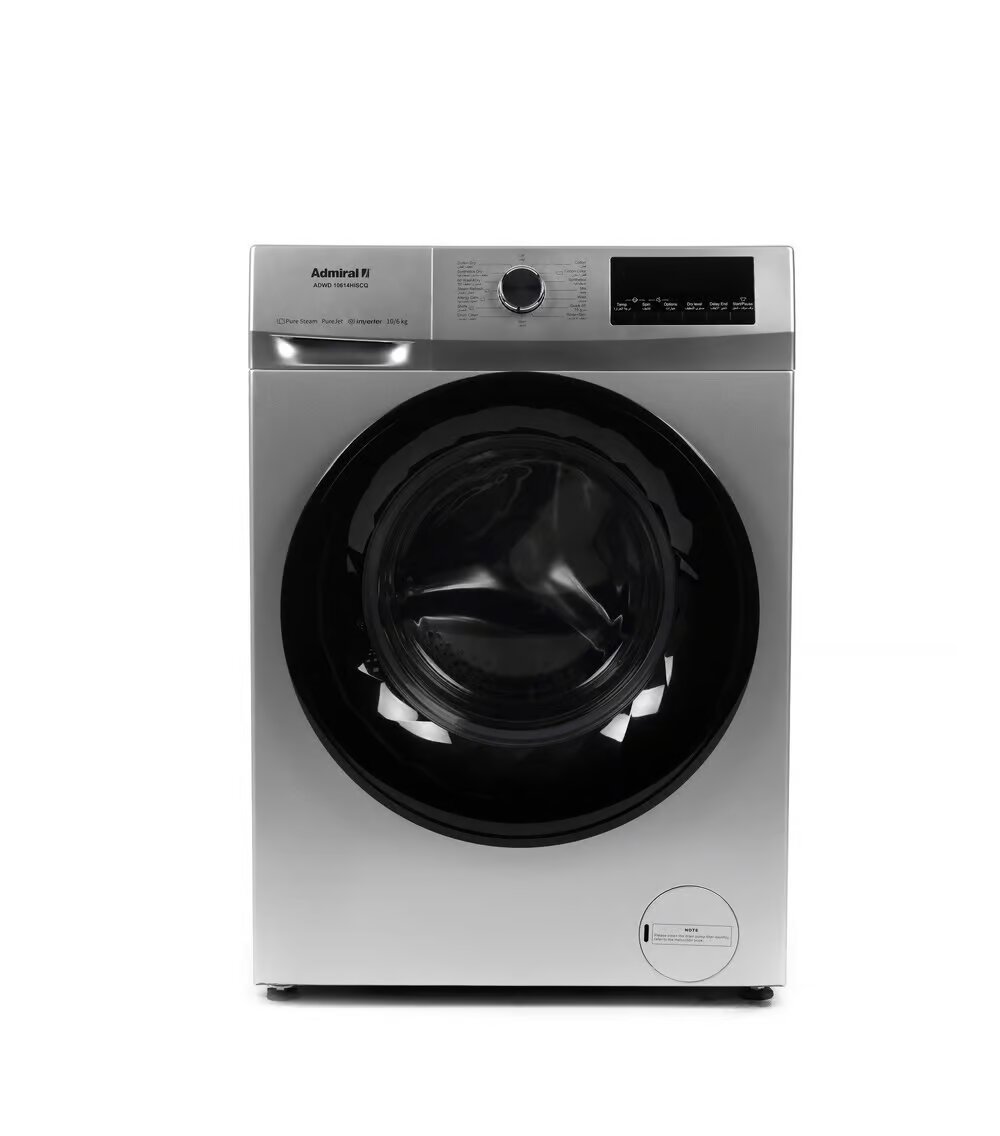Introduction
Welcome to our Ultimate Guide to Washing Machine Care! In today’s fast-paced world, the washing machine stands as a true unsung hero in our homes. It’s not merely a piece of machinery; it’s a household staple that keeps our lives organized and our clothes fresh. However, like any appliance, it requires attention and care to operate at its best. In this comprehensive guide, we’ll dive deep into essential tips and tricks that will help you extend the lifespan of your washing machine while ensuring it functions with utmost efficiency.
From understanding the different types of detergents to mastering the right load sizes, this guide will equip you with the knowledge necessary to give your washer the care it deserves. We’ll also explore common pitfalls to avoid and maintenance routines that will not only improve performance but also save you money on repairs and utilities.
Whether you’re a seasoned laundry pro or a newcomer to the washing machine world, our expert insights will empower you to take control of your laundry day and keep your appliance running smoothly for years to come. So, sneak away from your busy day for a moment, grab a cup of coffee, and join us as we unravel the secrets to washing machine care. Let’s get started on the path to cleaner clothes and a happier home!
Regular Maintenance Tasks
Washing machines are a cornerstone of modern convenience, making laundry days easier and faster. However, like any appliance, they require regular maintenance to function efficiently and extend their lifespan. This blog post outlines essential washing machine maintenance tasks you can perform to keep your appliance in tip-top shape.
Why Regular Maintenance Matters
Before diving into specific tasks, it’s important to understand why maintenance is vital. Regular upkeep not only enhances performance but also prevents costly repairs and reduces energy consumption. In short, taking care of your washing machine can save you time, money, and frustration in the long run.
1. Clean the Exterior
Your washing machine is often subjected to dust, detergent spills, and water stains. A simple wipe-down with a damp cloth and a mild detergent can keep the exterior looking new. Don’t forget to clean around the machine too; lint and dirt can build up and create an unsightly mess.
2. Check and Clean the Lint Filter
Just like your dryer, washing machines can accumulate lint — especially if you frequently wash towels or blankets. Ensure you check the lint filter regularly (every month or so) and clean it. A clogged lint filter can lead to longer wash cycles and may put extra strain on the motor.
3. Inspect the Hoses
The hoses that connect your washing machine to the water supply can wear over time. Inspect them at least every six months for any signs of wear, such as cracks, bulges, or leaks. While you’re examining the hoses, ensure they are properly secured to the machine and the water supply. If you find any damage, replace the hoses immediately to avoid flooding or water damage.
4. Clean the Drum
Over time, residue from detergent, fabric softeners, and dirt can accumulate in the drum of your washing machine. To combat this, run a drum clean cycle (if your washer has this feature) or run an empty load with hot water and white vinegar or baking soda. This helps to eliminate odors and clean any residues, promoting a fresh smell for your laundry.
5. Maintain the Detergent Dispenser
Detergent compartments can often become dirty and clogged with residue. Remove the detergent drawer and clean it with warm water and a soft brush or cloth. Make sure it dries completely before reinserting it back into the washer to prevent mold growth.
6. Level the Machine
An unlevel washing machine can lead to excess vibration and noise during cycles. To check if your machine is level, use a spirit level. If it’s not, adjust the feet of the machine until it’s seated evenly. This simple adjustment can lead to more efficient cycles and reduce wear and tear on the components.
7. Run a Hot Wash Cycle
Occasionally, it’s beneficial to run a hot wash cycle without laundry. This helps to eliminate bacteria and keeps the internal workings of the machine clean. Aim for this maintenance task every few months to help keep your washer in optimal condition.
8. Check the Water Pressure
Ensure that your washing machine is receiving adequate water pressure. Low water pressure can impact performance. If you notice that your machine isn’t filling up as quickly as usual, you might need to check the water supply valve or consult a professional.
9. Keep an Eye on Usage
Finally, pay attention to the frequency and type of loads you’re washing. Overloading your washer can lead to premature wear and tear. Follow the manufacturer’s recommendations for load sizes, and avoid washing heavy items with lighter ones to maintain balance.
Regular maintenance tasks for your washing machine are essential for its longevity and efficiency. By incorporating these simple steps into your routine, you can minimize repairs, reduce energy costs, and ensure that your laundry days remain hassle-free. Embrace the convenience of modern appliances, but also take the time to nurture and maintain them. A little effort can go a long way in keeping your washing machine running smoothly for years to come!
Understanding Detergents and Additives
When it comes to doing laundry, most of us simply reach for our favorite detergent and hit the start button on our washing machines. However, the world of laundry detergents and additives is more complex than it may appear at first glance. Understanding these products can help you make the most of your laundry routine, ensure your clothes are effectively cleaned, and even extend the life of your garments. In this blog post, we will delve into the different types of detergents and additives, as well as tips for using them effectively.
1. The Basics of Laundry Detergents
Laundry detergents serve one primary purpose: to remove dirt, stains, and odors from fabric. However, they can be categorized into several types, each with its distinct characteristics. Here are the primary types of detergents you may encounter:
a. Powdered Detergents
Powdered detergents are a traditional choice, often more economical than their liquid counterparts. They are effective in removing heavy stains and work best in warm or hot water. However, they may not dissolve fully in cold water and can leave residue on darker fabrics.
b. Liquid Detergents
Liquid detergents are versatile and convenient. They are effective at removing stains, especially when treated directly on the fabric before washing. Liquid formulas dissolve easily in both cold and warm water, making them a popular choice.
c. Pods and Packs
Laundry pods or packs are pre-measured doses of detergent, making them incredibly convenient. They often contain a mix of detergent and additives and can be a great option for those who struggle with measuring out liquid or powder. However, they can pose a risk if ingested, especially for children.
d. HE Detergents
If you have a high-efficiency (HE) washing machine, it is essential to use HE detergents. These detergents are formulated to produce fewer suds and work effectively in lower water volumes, ensuring optimal cleaning performance without damaging your appliance.
2. Understanding Additives
In addition to detergents, various additives can enhance your laundry experience by addressing specific cleaning needs. Here are some common additives and their uses:
a. Fabric Softeners
Fabric softeners are designed to reduce static cling and make clothes feel soft against the skin. They can be added during the rinse cycle or used as dryer sheets. However, be cautious when using them on performance fabrics like athletic wear, as they can reduce moisture-wicking properties.
b. Stain Removers
Pre-treating stains with dedicated stain removers can be highly effective. Look for enzymes that target specific stains, such as proteins (blood, sweat) or oils (grease, lipstick). Apply directly to the stain, let it sit for a few minutes, and then wash as usual.
c. Whitener and Brighteners
For brightening whites and enhancing colors, optical brighteners can be added to your laundry. They work by reflecting light, giving the illusion of brighter colors. However, be aware that prolonged use can lead to fabric wear over time.
d. Anti-Static Agents
For those living in dry climates or during winter months, anti-static agents can help mitigate clinginess in synthetic fabrics. These can often be found in dryer sheets or liquid fabric softeners.
e. Scent Boosters
If you want your clothes to smell fresh, consider adding scent boosters to the wash. These can enhance the fragrance of your detergent and provide a lingering scent long after laundry day.
3. Tips for Effective Use
Now that you understand the various types of detergents and additives, here are some practical tips for ensuring your laundry turns out fresh and clean:
- Read Labels: Always check garment care labels for specific wash requirements, including temperature settings and acceptable detergents.
- Measure Carefully: Use the recommended amount of detergent for your load size and soil level. Too much detergent can lead to residue build-up and reduced washing performance.
- Separate Colors and Fabrics: Sort laundry by color and fabric type to prevent color bleeding and ensure appropriate wash settings.
- Consider Water Temperature: Use hot water for heavily soiled items but opt for cold water for delicate fabrics and colors to avoid fading.
- Maintain Your Machine: Regularly clean your washing machine to eliminate detergent build-up and odors, ensuring optimal performance.
Understanding the different types of laundry detergents and additives can significantly enhance your laundry routine, leading to cleaner clothes and more efficient washing. By choosing the right products and employing effective practices, you can enjoy fresh, vibrant, and long-lasting garments. Happy washing!
Managing Odors and Residue
Washing machines are an incredible convenience in our daily lives, allowing us to save time and effort on laundry. However, like any appliance, they require regular maintenance to perform optimally. One common issue that many homeowners face is the buildup of odors and residue within the washing machine. If you’ve ever opened your washer to be greeted by a musty smell or found that your clothes aren’t coming out as fresh as they should, this blog post is for you. We’ll explore the causes of these issues and provide practical solutions for keeping your washing machine clean and odor-free.
Understanding the Causes of Odors and Residue
Before diving into solutions, it’s important to understand what contributes to unpleasant smells and residue in washing machines:
- Moisture Build-Up: Washing machines are regularly exposed to water and detergents, creating a damp environment that can encourage the growth of mold and mildew.
- Detergent Residue: Overusing detergents or using the wrong type of detergent can lead to suds that don’t fully rinse out, leaving a soapy residue.
- Fabric Softener: While fabric softeners add a pleasant scent to clothes, they can leave behind a sticky residue that accumulates over time.
- Standing Water: Water trapped in the machine, particularly in parts like the drain hose or pump, can become stagnant and lead to odors.
- Lint Build-Up: Lint and dirt can accumulate in the washer drum and other internal components, contributing to an unclean smell.
Tips for Keeping Your Washing Machine Fresh
1. Regular Cleaning Schedule
Establish a routine for cleaning your washing machine. Run a cleaning cycle once a month (many modern machines have a self-cleaning option). If yours doesn’t, fill the drum with hot water and add two cups of white vinegar or a washing machine cleaner. Run the machine on the hottest cycle to help eliminate bacteria and buildup.
2. Leave the Door Open
After each wash, leave the door or lid open for a few hours to allow moisture to escape. This simple step can help prevent mold and mildew from forming inside the drum.
3. Check and Clean the Gasket
Front-loading washers often have rubber gaskets around the door that can trap moisture and collect debris. Wipe down this area regularly with a cloth and a mixture of water and vinegar to remove residue and prevent odors.
4. Use the Right Detergent
Make sure to use the correct type and amount of detergent for your washing machine. High-efficiency (HE) washers require HE detergent, which produces fewer suds and rinses out more effectively. Follow the manufacturer’s instructions for the right dosage.
5. Avoid Overloading Your Washer
While it can be tempting to stuff your machine full of laundry, overloading can prevent items from getting cleaned properly and lead to detergent buildup. Stick to recommended load sizes to ensure everything gets the wash it needs.
6. Clean the Filter and Drain
Many machines have a lint filter or drain pump filter that can become clogged. Check your user manual for instructions on how to clean these parts and do so regularly to avoid build-up that could lead to odors.
7. Use a Deodorizing Agent
Adding a half cup of baking soda to your washing cycle can help neutralize odors. Alternatively, specialized washing machine deodorizing tablets can be a great option to consider.
8. Check the Drainage
If your washer continues to develop odors despite your best efforts, it could be a drainage issue. Ensure that water is draining properly and that hoses are not kinked or clogged. If you’re unsure, consult a professional.
A clean and well-maintained washing machine is key to keeping your laundry fresh and odor-free. By following these tips and establishing a routine for regular maintenance, you can ensure that your washer remains a reliable ally in keeping your clothes clean and smelling great. Remember, a little effort goes a long way in extending the life of your appliance and enhancing your laundry experience. Happy washing!
Ideal Washing Machine Environment
When it comes to laundry day, most of us take a washing machine for granted. We toss in our clothes, add detergent, and let the machine do its magic. However, creating the ideal washing machine environment can drastically improve its performance, extend its lifespan, and even lead to cleaner, fresher laundry. In this blog post, we will explore what constitutes the perfect washing machine environment—everything from placement and maintenance to the right water and detergent choices.
1. Placement Matters
Level Ground
One of the most important factors in ensuring your washing machine works optimally is the surface it’s placed on. Make sure your machine is on a level surface to prevent excessive vibration and noise. If your floor isn’t even, consider using adjustable feet or a leveling device to stabilize it.
Ventilation
Washing machines can produce moisture, so adequate ventilation is crucial. A well-ventilated area can prevent dampness and mildew, both of which can lead to mold and unpleasant odors. If your laundry room has poor airflow, consider installing an exhaust fan or merely keeping the door cracked open during use.
Temperature Control
Extreme temperatures can adversely affect your washing machine’s performance. Ideally, the temperature of the room should be stable and moderate—typically between 60°F to 90°F (15°C to 32°C). Avoid placing your washing machine in areas where it may be exposed to freezing temperatures, as this can damage internal components.
2. Water Quality
Hard vs. Soft Water
The quality of water you use can significantly impact the efficiency of your washing machine. Hard water contains high levels of minerals like calcium and magnesium, which can create soap scum and scale buildup within your machine. If you live in an area with hard water, consider investing in a water softener or using a specific detergent designed to combat hardness.
Temperature Considerations
Hot water can be effective for removing tough stains and sanitizing clothes, but it can also lead to higher energy costs and may not be suitable for all fabrics. Cold water is more energy-efficient and can still deliver excellent cleaning results when combined with the right detergent. Evaluate your laundry needs and adjust the water temperature accordingly.
3. Detergent Do’s and Don’ts
Choosing the Right Detergent
Not all detergents are created equal. Opt for high-efficiency (HE) detergents if you have a high-efficiency washing machine, as they are formulated to produce fewer suds and work best with low water levels. For tough stains and grime, consider pre-treating with a stain remover before loading items into the washer.
Avoid Overloading
While it may be tempting to pack your machine to save on laundry loads, overloading can lead to unsatisfactory cleanliness and potential damage to the machine. Follow the manufacturer’s guidelines for load size, and always give your clothes enough room to move freely during the wash cycle.
4. Regular Maintenance
Keep It Clean
Cleaning your washing machine regularly is essential for optimal performance. Run a hot water cycle with vinegar or a washing machine cleaner every month to eliminate soap scum, mold, and odors. Don’t forget to wipe down the door, rubber gaskets, and detergent dispensers as well.
Check Hoses and Filters
Periodically inspect hoses for any signs of wear and tear, as these can lead to leaks. Additionally, check and clean the filters to prevent clogs that could hinder drainage and performance.
5. Noise Control
Sound Dampening
If your washing machine operates in an area where noise is a concern, consider adding sound-absorbing mats underneath the machine. These mats can help reduce vibrations, providing a quieter laundry experience.
Creating the ideal washing machine environment is not just about efficiency; it’s about making your laundry experience smoother and more effective. From placing your machine on a level surface to understanding the importance of water quality, each factor contributes to better performance and longevity.
By following these tips, you can ensure that your washing machine operates at its best, enabling you to enjoy fresher, cleaner clothes and a more efficient laundry routine. Happy washing!
Energy Efficiency Tips
In today’s world, where energy consumption impacts both the planet and our wallets, it’s crucial to be mindful of how we use our appliances. Washing machines are one of the hefty energy consumers in our homes, but with a few strategic practices, you can optimize their efficiency. Not only will these tips help you save money on your utility bills, but they will also contribute to a greener planet. Let’s dive into some practical washing machine energy efficiency tips!
1. Choose the Right Machine
If you’re in the market for a new washing machine, consider opting for an energy-efficient model. Look for models that have the ENERGY STAR label, which signifies that they meet energy efficiency guidelines set by the U.S. Environmental Protection Agency. Front-loading machines are typically more efficient than top-loaders, as they use less water and energy to clean your clothes effectively.
2. Wash Full Loads
One of the simplest ways to save energy is by washing full loads rather than smaller ones. Washing a full load maximizes the resources used for each cycle, reducing the number of washes you do weekly. If you need to wash a small load, adjust the settings on your machine to use less water and energy.
3. Opt for Cold Water
Heating water accounts for a significant amount of energy consumption in the washing process. Whenever possible, wash your clothes in cold water. Modern detergents are formulated to work effectively at lower temperatures, ensuring that your clothes come out just as clean and fresh. You can save up to 90% of the energy used per wash by opting for cold water!
4. Use the Appropriate Cycle
Different fabrics and levels of soil require different wash cycles. Always read the labels on your clothing for care instructions and select the appropriate cycle. Using a shorter cycle for lightly soiled laundry not only saves energy but also extends the life of your garments.
5. Maintain Your Washer
Regular maintenance can enhance the efficiency of your washing machine. Clean your washer’s filter and inspect hoses for leaks. A clogged filter can decrease performance, leading to longer cycles and increased energy usage. Additionally, regularly running an empty load with hot water and vinegar can help prevent soap buildup and odors.
6. Dry Smart
While the focus here is on washing, remember that how you dry your clothing also affects overall energy consumption. If possible, air-dry your clothes outside. If you must use a dryer, ensure you’re not overloading it and that the lint filter is clean. Use dryer balls to improve air circulation, allowing for quicker drying times.
7. Time Your Washes
Take advantage of off-peak electricity rates by running your washing machine during off-peak hours, usually late at night or early in the morning. This not only helps you save on energy costs but also reduces strain on the power grid.
8. Educate and Involve Your Family
Share these energy-saving tips with your family members and encourage them to adopt energy-efficient washing habits. Whether it’s making a conscious choice to only wash full loads or opting for cold water, getting everyone on board will amplify your savings and promote sustainability.
Incorporating these washing machine energy efficiency tips into your routine can lead to substantial savings on your energy bills while making a positive impact on the environment. As you become more aware of how your choices affect energy consumption, you’ll not only foster a more sustainable lifestyle but also contribute to a greener planet. Remember, every small change counts in the journey toward energy efficiency!
Seasonal Care Tips
Your washing machine is likely one of the hardest-working appliances in your home. With regular use, it’s easy to take it for granted, but like any machine, it requires care and maintenance to function optimally. Seasonal changes can impact your washing machine’s performance, so it’s essential to keep it in shape with some seasonal care tips. Whether it’s spring cleaning or preparing for winter, these tips will help you prolong the life of your washer and ensure your clothes come out fresh and clean every time.
Spring: Time to Refresh and Clean
As the weather warms up, it’s the perfect time to give your washing machine a thorough cleaning.
1. Deep Clean the Drum
Remove any residual detergent, fabric softener, or grime that may have built up. You can run a clean cycle with a washing machine cleaner or use a mixture of vinegar and baking soda. Simply add two cups of vinegar to the drum, and one cup of baking soda to the detergent compartment, and run a hot cycle.
2. Inspect Hoses and Filters
Check your hoses for any signs of wear or leaks. Replace them if they appear cracked or frayed. Clean out the filters to avoid clogs. A little maintenance now can prevent extensive repairs later.
3. Descale the Machine
If you live in an area with hard water, consider descaling your machine. Purchase a descaler or use white vinegar to help minimize limescale build-up, keeping your machine running smoothly.
Summer: Prepare for High Use
Summer often means more laundry due to vacations, beach trips, and outdoor activities. It’s crucial to prepare your washing machine for the extra workload.
1. Check Water Supply
Make sure the water supply valves are functioning properly, as increased usage can stress them. Tighten connections if needed and check for leaks.
2. Use Cold Water Settings
Consider using cold water settings for your loads to save energy and prevent fading of summer clothes. Washing in colder temperatures is often just as effective and kinder to vibrant colors.
3. Monitor for Odors
Hot summer days can cause your washing machine to develop musty odors. After every wash, leave the door open to allow air circulation and prevent mildew growth.
Fall: Prepare for the Cold
As temperatures drop, it’s essential to prepare your washing machine for the colder months.
1. Check for Insulation
If your washing machine is in a garage or unheated basement, ensure that the water lines are insulated to prevent freezing. Frozen pipes can lead to expensive repairs.
2. Run Regular Maintenance Cycles
As summer ends, continue to run regular maintenance cycles to fend off any buildup. Consider scheduling monthly cleaning cycles to keep your machine in check.
3. Clean the Lint Trap
If your machine has a lint trap, make sure to clean it out regularly. Lint can accumulate and clog drainage, leading to inefficient performance and potential backups.
Winter: Prevent Damage and Maintain Efficiency
Winter conditions can be tough on your appliances. Take steps to protect your washing machine during the colder months.
1. Keep the Machine Warm
If possible, keep your washing machine in a heated area to avoid freezing issues. If it must remain in a cold space, consider wrapping it in an insulated blanket.
2. Empty and Dilute Detergent
Cold weather can cause laundry detergent to thicken or freeze. Make sure to store it in a warm place and keep it well diluted for optimal performance.
3. Monitor for Ice Buildup
Check the drain and hoses for any signs of ice buildup which can cause clogs. Regularly inspect them to ensure everything is clear and flowing properly.
A little seasonal care goes a long way in keeping your washing machine running efficiently and effectively. By incorporating these tips into your cleaning routine, you’ll not only extend the life of your washer but also enhance its performance, making laundry day a breeze regardless of the season. So, take the time to pamper your washing machine, and it will return the favor with fresher clothes and fewer repairs! Happy washing!
Conclusion
In conclusion, washing machine care is more than just a set of best practices; it’s an investment in seamless laundry cycles and household efficiency. Each small effort contributes to a more significant outcome—clean clothes, efficient washing, and, ultimately, a longer lifespan for your appliance.
As you integrate these care tips into your routine, remember that consistency is key. Create a simple checklist or set reminders to help keep you on track. The rewards will be clear: a reliable washing machine, reduced energy bills, fewer laundry disruptions, and more time for the things you enjoy outside of chores.
Thank you for joining us in exploring the ultimate guide to washing machine care! May your laundry experience be efficient, your clothes always fresh, and your machine serve you well for many years to come. Happy washing!










